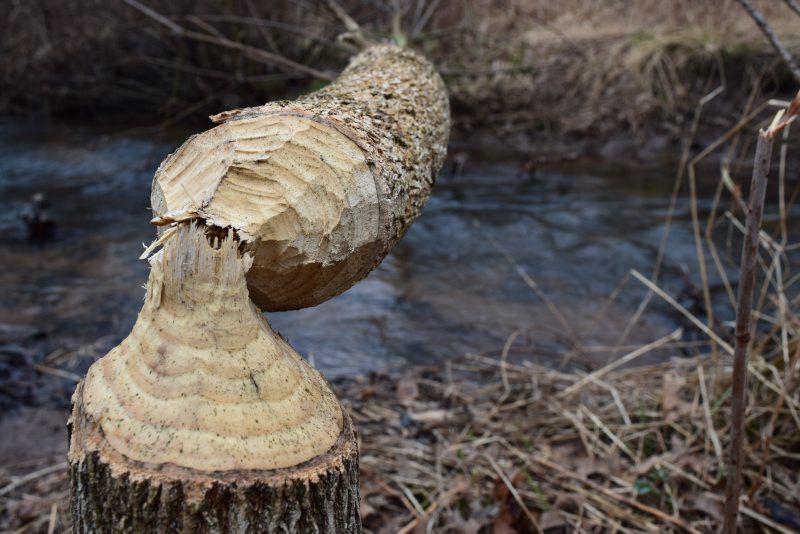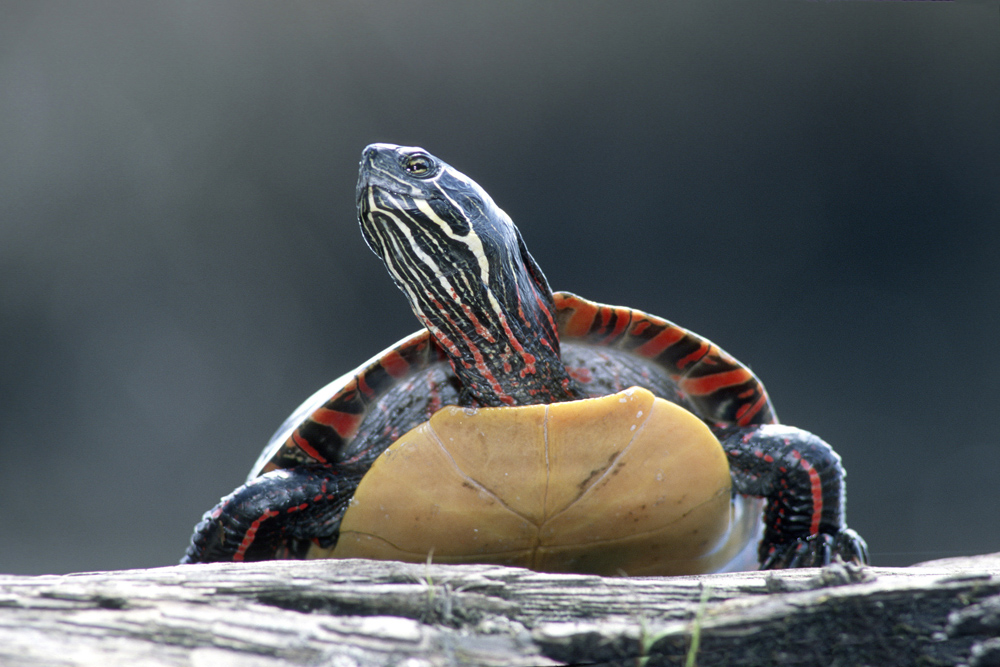A spoonful of sugar helps the medicine go down right? Let’s have something sweet and something not-so-sweet today because beavers face all kind of receptions. Here’s the response they’re getting in a park in Madison Wisconsin, because really who ever heard of wildlife in a park!
Beavers create controversy at Madison park
They say, in addition to tree damage, beavers often build dams that could create flooding across the park. With raised water levels, that could also increase the likelihood of fish dying.
People also say they’re upset the public was not notified. The city says trapping is a longstanding wildlife management practice. They says it’s not practical to have a public process prior to each instance of trapping being authorized, given the timing of a quick response.
That’s right, the mean beavers will make the water too deep and the fish might drown! And we do this all the time whenever we want to so don’t complain! We’re glad at least that people are upset about this. Because anytime people are forced to talk about their silly decisions on the nightly news there is a spark of hope the right people will think about changing.
Necessity may be the mother of invention. But discomfort is the precursor to listening.
Well, pay attention. You should take a lesson from two states (and some lakes) folks really paid attention to Joe Wheaton teaching about beaver benefits. Not clear why this article is being written in Pennsylvania but I’m sure glad it is.
 To Aid Streams Simply, Think Like a Beaver
To Aid Streams Simply, Think Like a Beaver
A buck-toothed rodent could teach people a thing or two about stream restoration.
Beavers have been building dams along North American streams for centuries, and their habits suggest cheap, simple ways to improve water quality, said Joseph Wheaton, an associate professor of watershed sciences at Utah State University.
Most current stream restoration practices are costly and require heavy machinery to rework small tracts of land.
“I would argue we spend that money so disproportionately on little postage-stamp restoration projects here and there, leaving millions of miles of streams neglected,” Wheaton said during a March 22 USDA webinar.
Wow, it was a webinar that inspired this article? Good work, somebody was paying attention. I wonder who. The author, Philip Gruber? He’s a staff writer, but maybe one with a eye on this? The only other name mentioned in the article is a sage brush specialist from Portland, Jeremy Maestas.Someone who works for Lancaster Farming wanted this written, and I, for one, am thrilled. Pennsylvania is one big kill-beavers state, so it’s remarkable. Dr. Wheaton must have been very convincing.
Beavers have contributed to those changes in the course of streams. To keep safe from predators, beavers like to have an underwater entrance to their above-water lodge. If the water is not deep enough to have such an entrance — often the case on headwater streams — beavers build dams to make it work.
 Beavers are found across much of North America, almost anywhere there’s water and wood. They are well-established in most areas of Pennsylvania.
Beavers are found across much of North America, almost anywhere there’s water and wood. They are well-established in most areas of Pennsylvania.
In places where they aren’t, such as Lancaster and Berks counties, excessive trapping and landowners’ distaste for beaver damage are the main reasons, according to a 2008 report by the Pennsylvania Game Commission.
The idea of using beavers as conservation accomplices dates back at least 60 years, when Idaho parachuted beavers into a wilderness area to improve trout habitat and reduce the risk of flooding.
That turned out to be fairly cheap and effective, Wheaton said, although he isn’t necessarily prescribing a furry air drop for Kutztown or Quarryville.
Humans can build beaver-damlike structures themselves with logs and large woody debris.
These structures can slow down a “bowling alley of a stream” and turn it into a more complex, more gently flowing habitat, he said.
 Dubbed beaver dam analogues, these structures can be built with hand labor. Even volunteers and children can get involved — no heavy machinery required.
Dubbed beaver dam analogues, these structures can be built with hand labor. Even volunteers and children can get involved — no heavy machinery required.
A beaver dam analogue can easily be adapted to fit the location, and it’s relatively simple to build a complex of dams as beavers often do, Wheaton said.
Considering they are made of raw wood, beaver dam analogues don’t have a super long life span — one to 10 years, depending on conditions.
That’s OK, Wheaton said. “Sometimes the failure of these dams produces some of the best habitat.”
Wait for it…here comes my favorite part.
Artificial beaver dams don’t work quite as well as actual beaver dams do, so once people have laid the groundwork, it often is possible to turn the conservation work over to the critters themselves.
HERE ENDETH THE LESSON. The moral of the story is that you can get your buddies together and run around cutting up trees and pretending to be beavers every few years or you can simply stop killing the animals and let the be themselves, making repairs as needed and constantly improving their work.
Which one sounds easier to you?



 “A beaver dam is a complex structure designed specifically to slow the flow of water in a stream that results in creating a pond or wetland. Unfortunately, in the eyes of humans, flooded lands and fallen trees (specifically aspens, which is the tree of choice for beavers) appear to be an attack on the land. However, this is far from reality. The stumps grow new shoots which are a favoured food of moose and white tail deer, snags or dead standing trees become prime nesting locations for cavity nesters, including woodpeckers, wood ducks and mergansers, and the resulting wetlands offer increased habitat for insects, amphibians and reptiles, osprey, blue herons, mind and more – in fact, 85 per cent of all North American fauna rely on wetlands,” he explains.
“A beaver dam is a complex structure designed specifically to slow the flow of water in a stream that results in creating a pond or wetland. Unfortunately, in the eyes of humans, flooded lands and fallen trees (specifically aspens, which is the tree of choice for beavers) appear to be an attack on the land. However, this is far from reality. The stumps grow new shoots which are a favoured food of moose and white tail deer, snags or dead standing trees become prime nesting locations for cavity nesters, including woodpeckers, wood ducks and mergansers, and the resulting wetlands offer increased habitat for insects, amphibians and reptiles, osprey, blue herons, mind and more – in fact, 85 per cent of all North American fauna rely on wetlands,” he explains. The heightened wildlife activity centred on the beaver pond confirms its importance in biodiversity and maintenance of wetlands. In fact, Ducks Unlimited, which has a mandate to protect duck populations, recognizes the value of working with beavers to restore wetlands and the symbiotic relationship between healthy duck and beaver populations.
The heightened wildlife activity centred on the beaver pond confirms its importance in biodiversity and maintenance of wetlands. In fact, Ducks Unlimited, which has a mandate to protect duck populations, recognizes the value of working with beavers to restore wetlands and the symbiotic relationship between healthy duck and beaver populations. 

 Okay, I’ll give Mark a break. Maybe that was a misquote or taken out of context. Maybe you’re having an off day or your cat is in the vet. It’s mostly a wonderful article. And I’m still very happy about it. We all should be!
Okay, I’ll give Mark a break. Maybe that was a misquote or taken out of context. Maybe you’re having an off day or your cat is in the vet. It’s mostly a wonderful article. And I’m still very happy about it. We all should be!


 PARRY SOUND SIDEROADS AND SHORELINES — Winter is the time of year when many wild animals living in the Parry Sound area have adapted to escape and wait out the heavy snowfalls and dropping temperatures. Bears hibernate in cosy dens, squirrels have built nests and stashed food away, and frogs have dug into the lake bottoms and drastically reduced their temperature. But the industrious beaver continues to be quite active during winter until the lakes freeze over completely, and even then this animal can be seen busily repairing any damage to its lodge or dam.
PARRY SOUND SIDEROADS AND SHORELINES — Winter is the time of year when many wild animals living in the Parry Sound area have adapted to escape and wait out the heavy snowfalls and dropping temperatures. Bears hibernate in cosy dens, squirrels have built nests and stashed food away, and frogs have dug into the lake bottoms and drastically reduced their temperature. But the industrious beaver continues to be quite active during winter until the lakes freeze over completely, and even then this animal can be seen busily repairing any damage to its lodge or dam. The resulting dam sets in motion an entire alteration to the ecosystem. Hence, beavers are considered a “keystone species” (one that plays a unique and crucial role in the way an ecosystem functions. Without keystone species, the ecosystem would be dramatically different or cease to exist altogether). The building of dams modifies and creates a dramatic change to the surrounding environment. The backwater flooding from the dam floods the lowland near the creek; trees die creating an opening in the forest canopy; aquatic plants and shrubs soon develop, making a favourable habitat for waterfowl, herons, moose, amphibians, fish, insects, muskrats, otters and a score of bird species. Their activity purifies water and prevents large-scale flooding.
The resulting dam sets in motion an entire alteration to the ecosystem. Hence, beavers are considered a “keystone species” (one that plays a unique and crucial role in the way an ecosystem functions. Without keystone species, the ecosystem would be dramatically different or cease to exist altogether). The building of dams modifies and creates a dramatic change to the surrounding environment. The backwater flooding from the dam floods the lowland near the creek; trees die creating an opening in the forest canopy; aquatic plants and shrubs soon develop, making a favourable habitat for waterfowl, herons, moose, amphibians, fish, insects, muskrats, otters and a score of bird species. Their activity purifies water and prevents large-scale flooding. A few years ago, the television program The Nature of Things featured a show entitled “The Beaver Whisperer” outlining the efforts of a few Canadians who have studied and/or worked with beavers, giving an in-depth account of the beaver. The Parry Sound area is home to many beavers and if you are lucky enough to see one around twilight, watch and observe the complex behaviour of this fascinating animal.
A few years ago, the television program The Nature of Things featured a show entitled “The Beaver Whisperer” outlining the efforts of a few Canadians who have studied and/or worked with beavers, giving an in-depth account of the beaver. The Parry Sound area is home to many beavers and if you are lucky enough to see one around twilight, watch and observe the complex behaviour of this fascinating animal. 



































